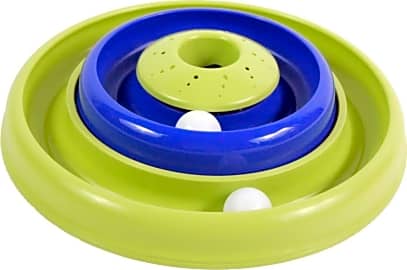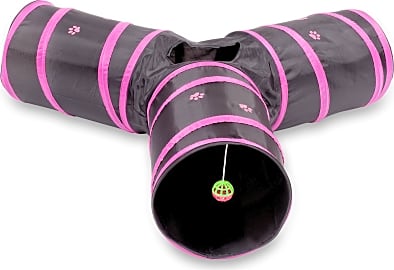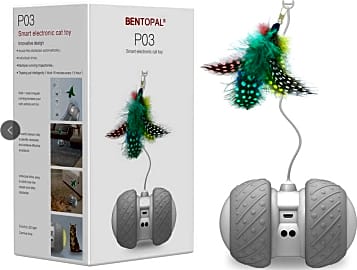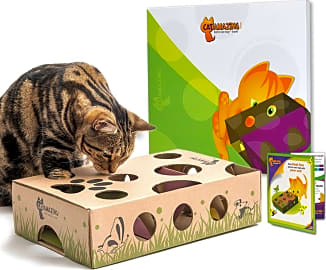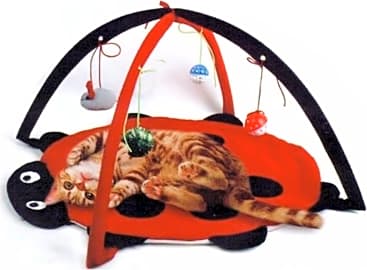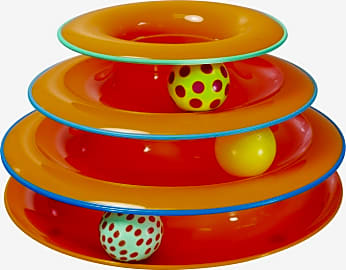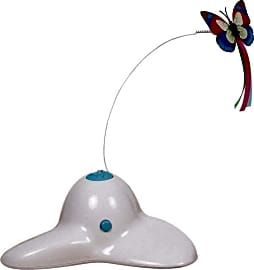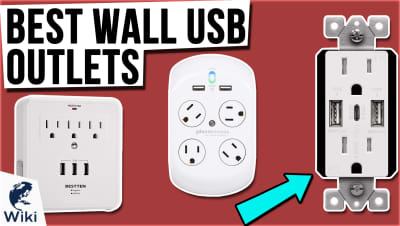The 10 Best Cat Toys

This wiki has been updated 38 times since it was first published in June of 2015. The old saying "The devil makes work for idle hands" is quadruply true for paws. Give your furball something less destructive and more fun to do than scratching up your furniture with one of these inventive, entertaining and safe cat toys. Our selection includes plenty of high- and low-tech options to keep your furry friends active and amused when you can't be with them. When users buy our independently chosen editorial recommendations, we may earn commissions to help fund the Wiki.
Editor's Notes
May 26, 2021:
For the most part, we found that this list was still in good shape, containing a healthy mix of toys that we feel will appeal to many cats, and hopefully some of their owners. With the majority of our previous picks still presenting good availability and excellent user feedback, we didn’t see much need to make many changes to these rankings, but we did notice that the Unzano Interactive seemed like it might no longer be around, so we went ahead and removed it from our list.
In its place, we aded the Yve Life P01, an automated laser toy that’s likely to captivate your favorite feline for hours. We liked that it could either be powered via USB or with AA batteries, allowing users the option of either setting it and forgetting it, or locating it somewhere convenient that might not have easy access to a USB outlet.
We also took the opportunity to replace the Bergan Turbo Scratcher with the Bergan Hurricane, a catnip toy that we thought many felines might fancy. It comes with some catnip to get you started, and a ball for both of its tracks, so it’s pretty well ready to go out of the box.
For more equipment to help enhance your pet’s lifestyle, check out our lists of automatic pet feeders, self-cleaning litter boxes and pet doors.
February 21, 2020:
We removed the Petmate Go Fish from the list due to reports of cats chewing the silicone tails off of the plastic fishes. In it's place we added the Amazon Basics Activity Center. It's also a puzzle to help relieve boredom and prevent scarfing down food, and all it's parts are hard plastic.
We added more intelligent battery-operated choices like the Ralthy Robotic and the Unzano Interactive. These toys move in random patterns that help keep the cats interested over time. The Ralthy Robotic is an especially good choice for pets who are home alone several hours because it activates for 10 minute intervals every 90 minutes, for all day fun.
Special Honors
Tuft + Paw If you're looking for some pet accessories that won't detract from your home's modern decor, this is one place worth checking out. Admittedly, their selection of toys is rather sparse, but they offer an impressive line of cat furniture and climbers, including one unit that essentially looks like a scaled-up hamster wheel, which some high-energy cats are sure to enjoy. tuftandpaw.com
Mungo & Maud This London-based outfit offers a boutique-style shopping experience for distinguished dogs and cats. Granted, your kitten will likely have as much fun swatting at a loose bottle cap as it will batting around one of their tasteful knit toys, but that won't stop them from looking better lying on your living room floor than a stray piece of garbage, and they seem to be priced quite fairly. mungoandmaud.com
Your True Cat
Their independence earns respect, and consequently makes us want to play with them even more.
Cat's don't necessarily want to play when and how you want them to. It's part of their nature to confound and defy their owners, which, frankly, is part of their charm. Their independence earns respect, and consequently makes us want to play with them even more.
The last cat I lived with belonged to a roommate, and she (the cat not the roommate) was a handful. She was simultaneously mean and needy, incredibly vocal, and rather dangerous. I secretly think she loved nothing more than the feel of torn flesh beneath her claws, but she did have a sweet side under all that.
That sweet side in any animal comes out during play. When the dominant creature in a household to initiates play, it informs the rest of the brood that they can let their guard down, so something closer to their true personality can shine. It's akin to spending one-on-one time with the person you love and trust the most; the rest of the world disappears and you can simply be yourself.
That's a valuable physical and psychological experience for any animal. For a cat, even if they initiate play on their own, it's an opportunity to burn off some energy, release some endorphins, and keep the mind agile. One of the cats I had growing up didn't do this enough. She barely played at all for the 12 years we had her, and she descended into a terrible dementia in her final year.
The cat toys on this list all engage your kitty's mental gamesmanship (gamescatship?) by getting them in touch with their spacial relations and their hunters' instincts. Some of them recreate the chase, offering your cat a chance to go after a fake mouse or some representation of an elusive and tasty creature.
Others play on a cat's exacting instinct to follow a moving object in a set space. Still others employ more maze-like constructions that your cat can run around endlessly when those sudden bursts of energy hit (as they, for some reason, always seem to do right after they use their litter box).
Put Yourself First
Nothing is more disappointing that making an impromptu stop at the pet shop, finding what you think is the absolute perfect cat toy, and bringing it home only to watch it collect dust and far outlive the feline in question. Try as you might to get your cat to engage with certain toys, they have always been and will always be fiercely aloof animals with their own unique and ever-evolving sets of standards.
What's more important, then, and what often gets more respect for you from your cat, is that you acquire a toy from our list that's convenient for you.
In that sense, you can't treat a decision among the toys on our list they way you might if you were purchasing a gift for a child. Even for a younger child, you could identify some likes and dislikes, some tendencies toward or away from certain kinds of toys, and you could then make an informed decision that would likely thrill the young person. Even if your cat has had nothing but love and excitement for, say, catnip mouses all his or her life, you could bring one home tonight and it might go unused.
What's more important, then, and what often gets more respect for you from your cat, is that you acquire a toy from our list that's convenient for you. The primary variable to focus on in that case is size. If you've got a big house, a tiny toy is likely to get lost in the first hour, and maybe never found again. Conversely, if you've got a smaller apartment, a giant, multi-tiered cat run is going to take up more space than your bed and your couch combined. A toy like that transforms your space into theirs, and is unhealthy for the power dynamic of the relationship.
Definitely take your cat's personality and your success with prior toys into account, but add in questions of size and convenience for you into the equation, and you're more apt to come away with a toy that'll not only get a healthy amount of use, but one that'll keep you from pulling out so much of your hair that you'll begin to outshed your cat.
Taming The Natural Hunters
Cats began to domesticate themselves over 10,000 years ago. They did so in conjunction with mankind's efforts at building the first agrarian society. Up until that point, men had been hunters and gatherers, often living nomadic lifestyles. The land around the Fertile Crescent area of the Middle East proved so fecund and produced so much usable food with such ease, that humans established permanent civilizations in the region.
They had their paws full catching all the mice they could find.
With farming comes the storage of grain. With the storage of grain come hoards of mice. Hot on the heels of the mice come hungry, wild cats. These cats and their efficient hunting skills proved invaluable to the first agrarian humans, and in a short while there began a symbiotic cohabitation between the species that led to the domestication of the wild cat.
At that time, there was no need for cat toys. They had their paws full catching all the mice they could find. In more recent centuries, the classic toy for a cat was a ball of yarn. The mass was soft but stable, and the cat's claws easily sank into the surface of it. A little stray string even resembled a tail.
The popularity of such a simple toy lead to the development of stuffed mice and other playthings meant to mimic the act of the hunt as closely as possible, with companies in the 20th century incorporating the science of a feline's predatory behavior.



